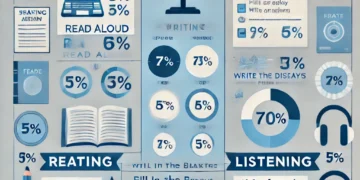Spotify is one of the world’s leading music streaming platforms, serving millions of users globally with seamless music recommendations and playback. The company’s system design is a prime example of how large-scale systems are built to handle personalization, low-latency streaming, and continuous scaling.
1. Architecture Overview
Spotify’s architecture is built on a combination of microservices and data-driven design to ensure scalability and performance. The system is divided into independent services, each responsible for specific functions such as recommendations, user data, or music catalog management.
- Microservices Framework: Spotify uses a microservices architecture deployed on Google Cloud Platform (GCP) to scale individual components as needed.
- Event-Driven Systems: Systems like Apache Kafka handle asynchronous communication between services, ensuring smooth data flow.
2. Music Streaming
Streaming music in real-time requires low latency and high reliability. Spotify achieves this by:
- Distributed Caching: Utilizing Content Delivery Networks (CDNs) ensures that songs are delivered quickly by caching popular tracks closer to users.
- Adaptive Streaming: Similar to Netflix, Spotify adjusts audio quality based on network conditions, balancing performance and user experience.
3. Personalization and Recommendations
Spotify’s recommendation engine is a standout feature, leveraging machine learning to deliver personalized playlists like Discover Weekly and Daily Mixes.
- Collaborative Filtering: Spotify analyzes user behavior (e.g., songs played, skipped) to identify patterns and recommend songs.
- Natural Language Processing (NLP): Metadata from song lyrics, genres, and blogs is processed to categorize tracks.
- Reinforcement Learning: Feedback from user interactions improves the algorithms over time.
4. Data Infrastructure
Handling billions of streams daily requires robust data infrastructure.
- Apache Cassandra: For scalable, distributed databases that store user data.
- Hadoop and Spark: For batch processing and analytics of large-scale data sets.
- BigQuery: Leveraged for querying massive data volumes to generate insights.
5. Scalability and Reliability
Spotify’s global user base demands a system that is highly available and capable of scaling quickly:
- Kubernetes: For container orchestration and efficient resource utilization.
- Auto-scaling: Services automatically scale based on traffic to handle peak times.
6. Challenges and Solutions
- Challenge: Managing a growing music catalog and user base without compromising speed.
Solution: Distributed data storage with efficient indexing for fast retrieval. - Challenge: Handling licensing and regional content restrictions.
Solution: Dynamic catalog filtering to serve the correct content based on user location.
7. Security Measures
User trust is paramount, and Spotify takes strong measures to secure data:
- Encryption: All user data and streams are encrypted using secure protocols.
- Fraud Detection: Systems monitor for unauthorized usage or account breaches.
8. Continuous Innovation
Spotify continues to invest in:
- AI-powered features: Enhancements like AI DJs and voice commands.
- Social integrations: Features like collaborative playlists and real-time sharing.
Spotify’s system design exemplifies how a company can scale rapidly while maintaining a personalized, reliable, and seamless user experience. Its use of cutting-edge technologies and innovative design keeps it at the forefront of music streaming.










































